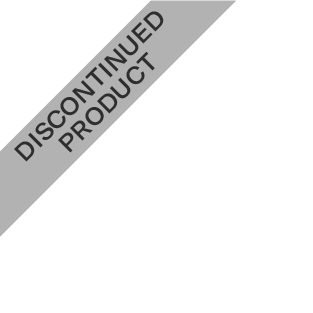PV modules - nothing is working without us!
PV modules are the heart of every PV system. Photovoltaic modules convert the photons (light particles) contained in sunlight into electrons. The electrons then allow the electricity to flow that we can use in our homes.
A lot has happened in the last few years! Initially, polycrystalline cells were used in the modules, but these were quickly replaced by monocrystalline cells. In monocrystalline cells, the silicon consists of a large, uniformly grown crystal lattice and therefore has better electrical properties. Until recently, p-doped (p-type) cells were also the international standard in cell production. Recently, however, n-type cells and modules have entered the market. The n-type technology promises higher efficiencies due to improved recombination properties in the crystal lattice. Partly due to these innovations, PV modules are becoming increasingly efficient and new efficiency records are being set every year. Efficiency indicates what percentage of sunlight is converted into usable energy. Modern modules now achieve an efficiency of around 22%, which was unthinkable just a few years ago. Thanks to these improvements, the use of solar energy is also profitable on smaller roof areas and can therefore contribute to generating energy from the sun. In addition, the individual solar cells in the modules have become larger and larger, which has led to a rapid drop in the price of the technology. The trend towards larger cells has also contributed to leading module manufacturers developing the half or third cell arrangement. This improves the low-light performance of the modules and shading leads to less significant energy losses.
From power generator to visual highlight: photovoltaic modules through the ages
The constant further development of PV systems includes both technical efficiency and aesthetic aspects. Full-black modules have now almost become the standard and, with their deep black surface, provide an elegant aesthetic for rooftop photovoltaic systems. They not only support clean power generation, but also blend in perfectly with the architectural design. These solar modules are not only technological but also visual highlights.
However, the improvements in the design of PV systems go even further. Some advanced manufacturers have already developed colored photovoltaic modules specifically designed for use on colored facades. These colored modules represent an exciting step towards a more comprehensive integration of solar technology into our buildings. They make it possible to seamlessly combine energy production with aesthetic requirements by combining color and performance in a stunning way.
At the same time, the efficiency of photovoltaics has steadily increased. The latest monocrystalline solar cells achieve impressive performance levels that were considered unimaginable just a few years ago. As a result of these advances, modules are producing more watts per surface area, increasing the energy harvest per square meter. Continuous improvements in efficiency are enabling ever more efficient use of solar energy, making it an increasingly attractive option.
The range of PV modules available is impressive. Various manufacturers offer modules in different sizes and with different cell technologies and power specifications. This enables extremely adaptable system planning that is tailored to specific conditions and requirements. Whether for private households, business operations or industrial facilities - the right solution is within reach.
In conclusion, it can be said that nowadays there is a suitable module for nearly every application. Different sizes, cell technologies and performance parameters allow flexible system planning and design of the available space. From elegant all-black modules to creative color options, they offer a wide range of possibilities for integration into the building design. With ever-increasing efficiency and a wide choice of manufacturers, solar technology is becoming increasingly important for sustainable energy supply. You should seize this opportunity and use the space on your roof to contribute to the energy transition and the well-being of our planet by installing a system. So: Fully equip your roofs for the energy transition and "for our planet"!
Frequently asked questions
- Which is better: p-type or n-type modules?
Whether p-type or n-type modules are better depends on your requirements. p-type modules are robust and proven and have a very good price-performance ratio. However, p-type modules do not achieve the same conversion efficiencies as n-type modules. n-type modules are more expensive, but this cell technology also generates the highest efficiencies and the best thermal coefficients.
- Solar cell and solar module: What is the difference?
A solar cell is the smallest unit that converts light energy directly into electrical energy. It is usually made of silicon and is about the size of the palm of your hand. A solar module, on the other hand, is a combination of several solar cells that are wired together to increase power generation. This module is usually fitted with a frame and a glass cover to protect the cells from environmental influences.
- Which solar modules have the highest efficiency?
Monocrystalline solar modules currently have the highest efficiency of all solar modules. The solar cells in the modules consist of individual, high-purity silicon crystals and achieve efficiencies of up to 22%. However, they are also more expensive to produce and purchase. However, their high efficiency makes them particularly attractive for applications where space is limited and maximum energy generation is required, for example on residential buildings.
Glossary
- Monofacial
Light is only converted into energy on the front of the module.
-
Bifacial
Light can be converted into energy on both the front and back of the module.
-
Double glass
The cells are located between a front and back glass, in contrast to glass-foil modules.
-
Full-Black
Both the frame and the spaces between the cells on the front of the module are black.
-
Heterojunction (HJT)
Innovative, symmetrical cell design with conductive TCO layer (Transparent Conductive Oxide).
-
HPBC cell technology (Hybrid Passivated Back-Contact Cell)
Innovative cell design without busbars on the front of the cell. Positive and negative contacts are located on the back of the cell.
-
Multi busbar (MBB)
Innovative arrangement of the busbars on the front of the cell for electrical energy distribution.
-
N-type technology
Cell design with negatively doped silicon.
-
P-type technology
Cell design with positively doped silicon.
-
PERC technology
Solar cell with passivation layer (Passivated Emitter Rear Cell).
-
PERL technology
Cell design with special surface texturing for light trapping with point contact on the back and double anti-reflective layer (Passivated Emitter Rear Locally Diffused).
-
TOPCON technology (Tunnel Oxide Passivated Contact)
Innovative cell design with silicon oxide tunnel layer.
-
Wafer
Silicon wafer, approx. 100-200 micrometers thin, serves as the basis for circuits.
-
Efficiency
The efficiency describes the ratio of irradiated to usable energy and thus the efficiency of the conversion of light into electricity of a solar cell. Typical values are between 15-25 %.
-
Wp
Unit of the maximum ("peak") output of a solar module.
-
Half-cell design
The full-surface cell is cut in half.
-
Shingle design
The full-surface cell is cut into several thin strips and then attached to the module with an overlap.
























































.png)





